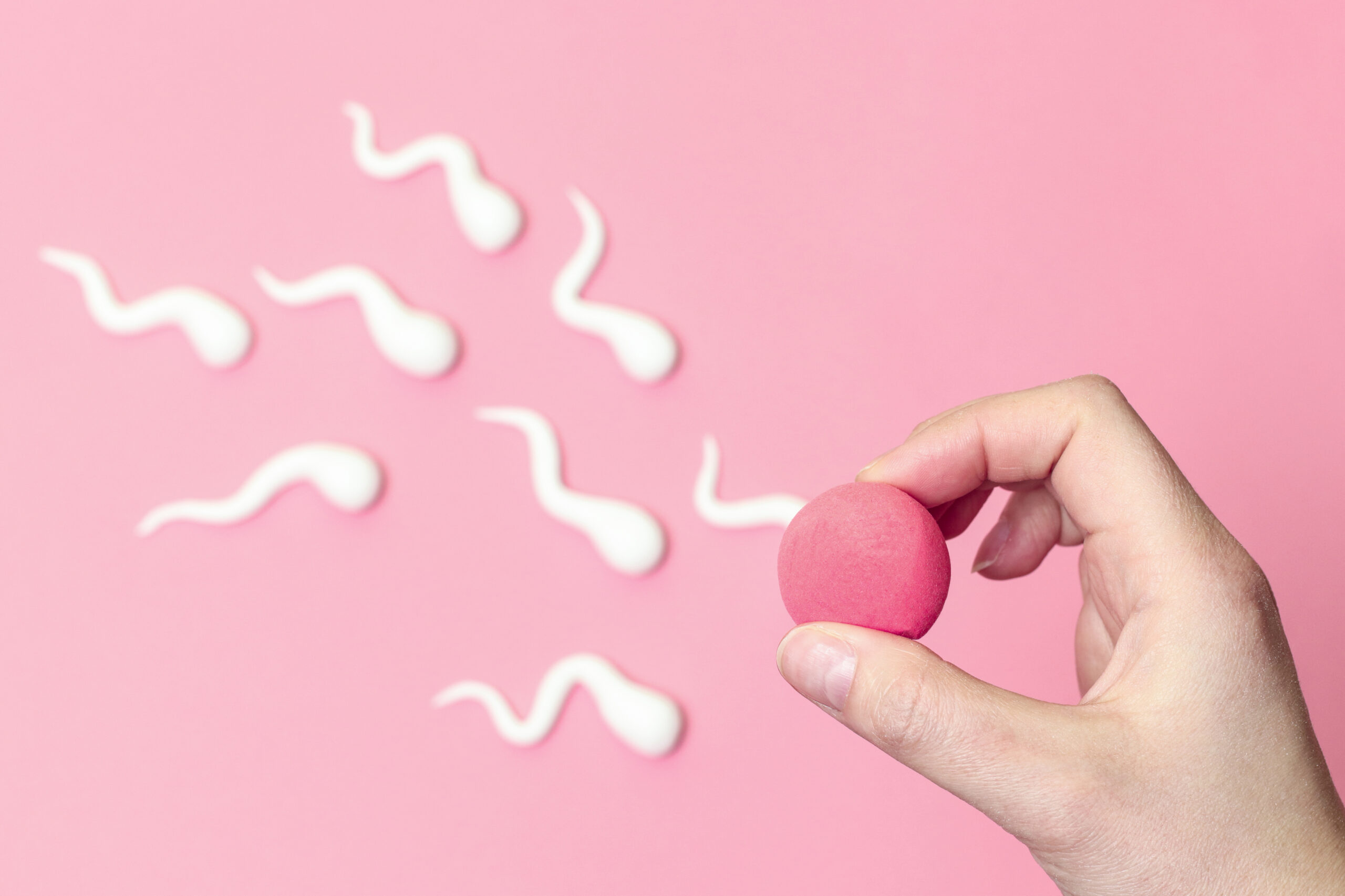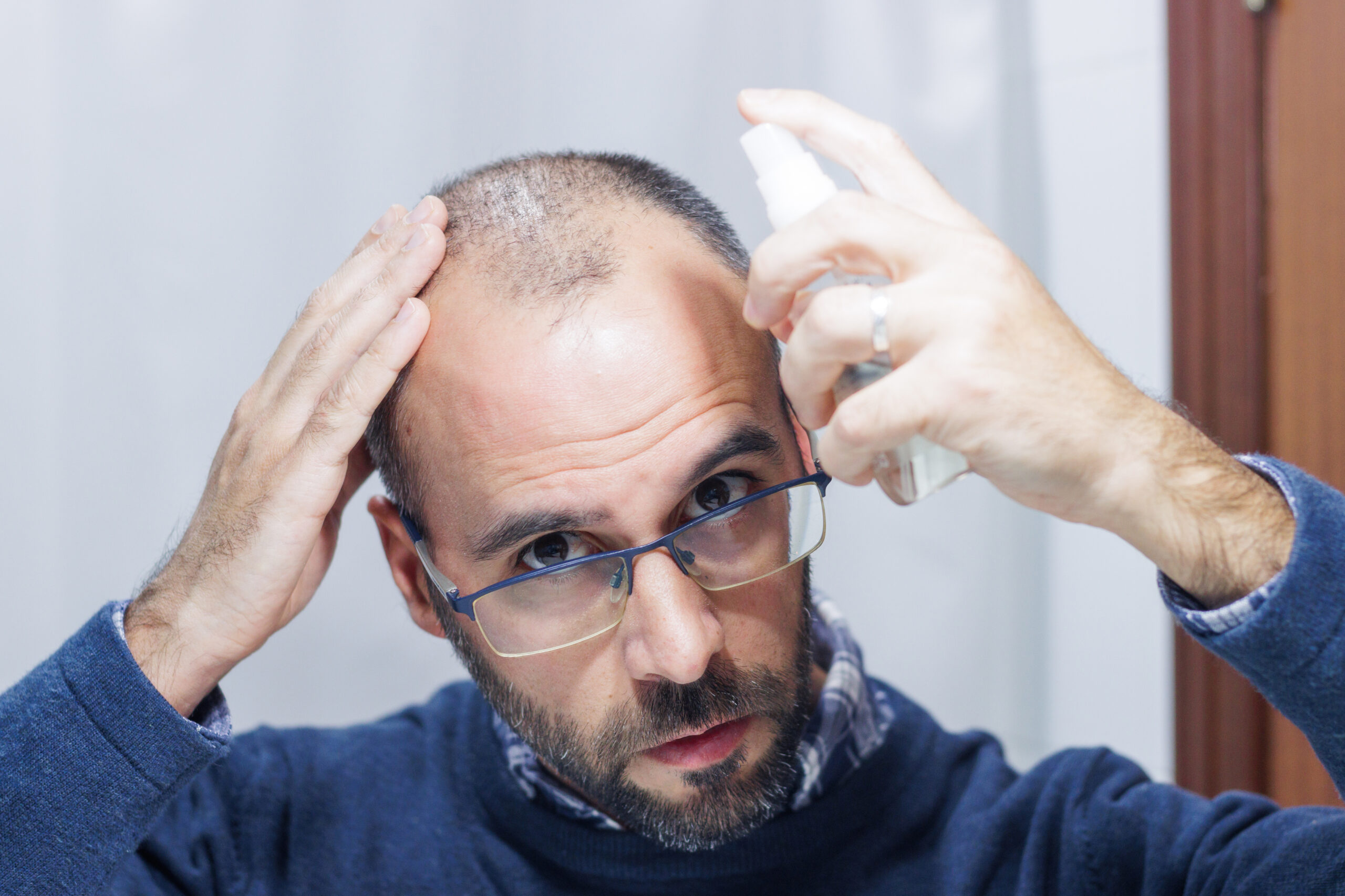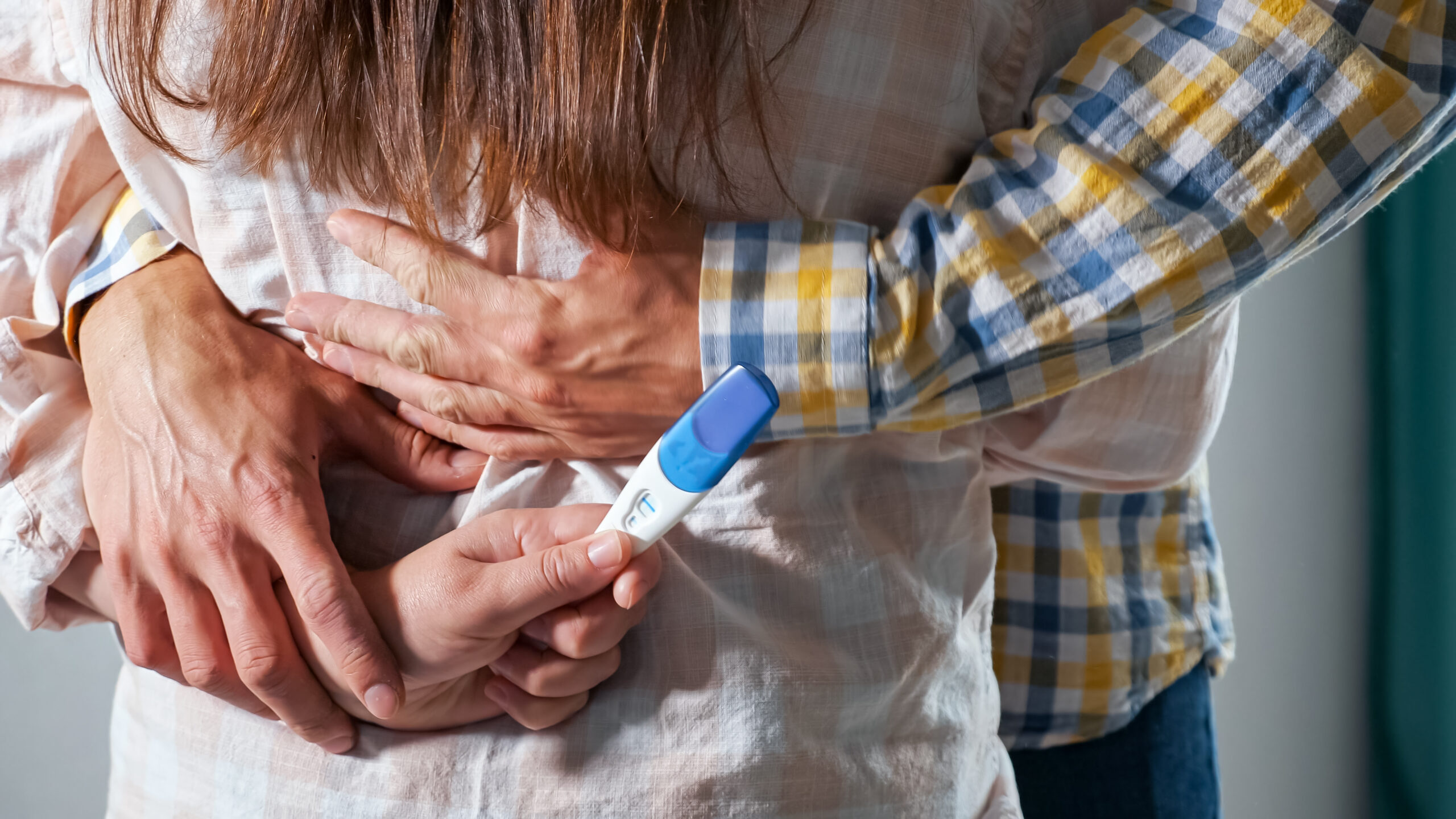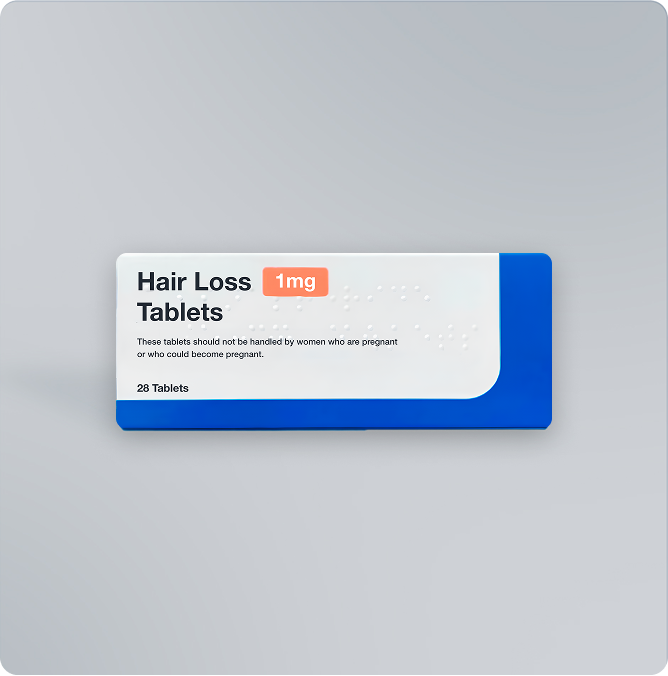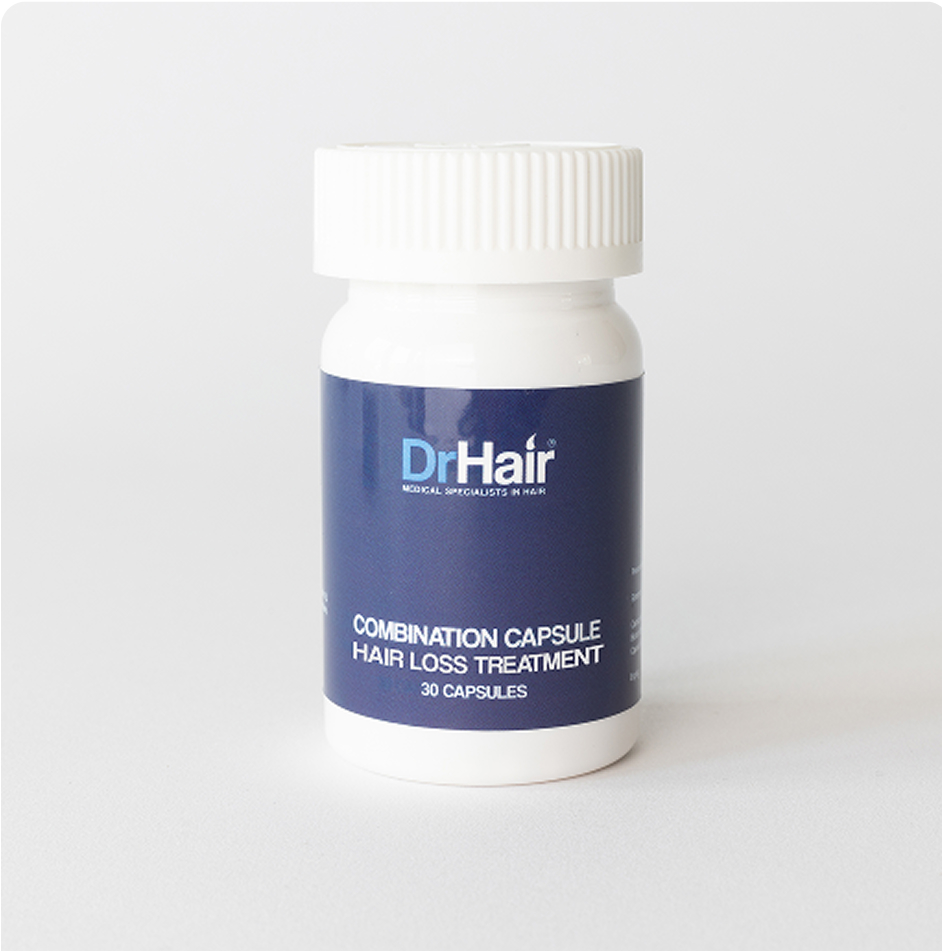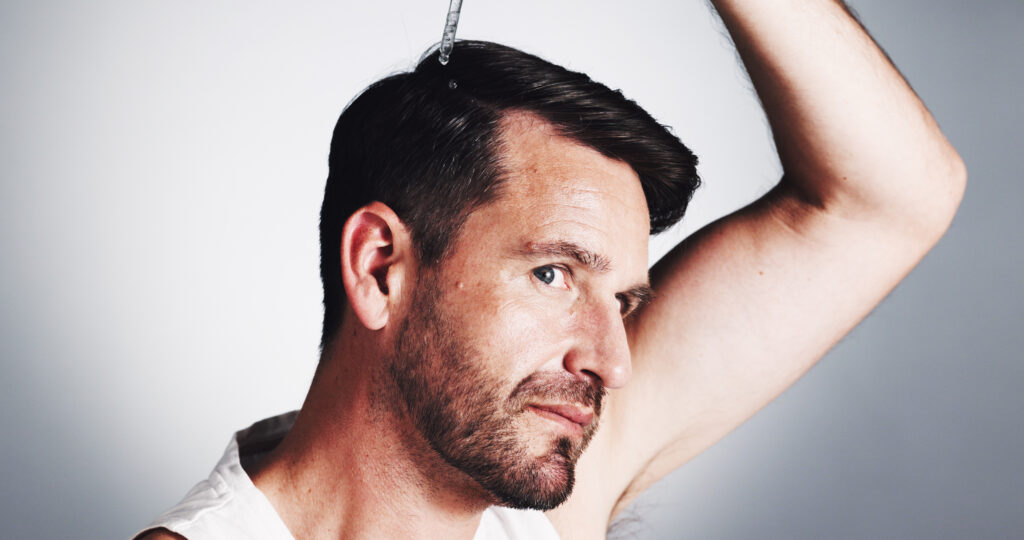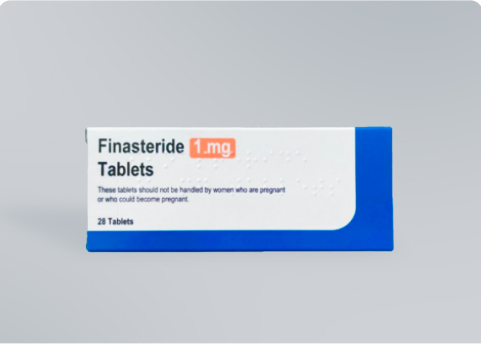Finasteride is a very effective male pattern baldness treatment, helping restore hair in 83% of men with crown hair loss and 70% of those with a receding hairline [1]. But unfortunately finasteride does come with some side effects, including a risk to male fertility [2-4].
So how does finasteride affect fertility, and should you be concerned if you’re using finasteride (or thinking about it)? Here, you’ll learn all about finasteride and fertility, including:
- Whether finasteride affects fertility according to research.
- How finasteride affects sperm and semen properties.
- Whether finasteride-related fertility is permanent.
- What to do if you use finasteride and are thinking about having a baby.
- How to decide if and when to take finasteride.
Table of Contents
- Does finasteride affect fertility?
- The effect of finasteride on sperm count and semen quality
- How much does finasteride reduce fertility?
- Is finasteride-related infertility permanent?
- Does topical finasteride affect fertility?
- Can a man take finasteride while trying to conceive?
- Is finasteride right for you? Find out with DrHair
- FAQs
Does finasteride affect fertility?
Several studies have shown that finasteride may have an impact on male fertility [2-4]. This drug has been linked with low sperm count, low semen volume, and low sperm motility.
Finasteride helps with hair loss by lowering your dihydrotestosterone (DHT) levels. DHT is a male sex hormone that causes male pattern baldness, but it also plays a key role in semen production and prostate growth [5]. So it’s unsurprising that suppressing DHT production can lead to fertility problems.
The effect of finasteride on sperm count and semen quality
According to research, finasteride can affect several different sperm and semen parameters:
- Sperm count — Finasteride may reduce sperm count, even at a 1 mg dose [3].
- Semen volume — The prostate is (partly) responsible for semen production. Continuous finasteride use can shrink the prostate (the medication was first developed as a treatment for benign prostate enlargement). But if you have a normal prostate, finasteride may impair its function, leading to lower semen volume [6]. Other studies have also linked low semen volume with finasteride use [2].
- Sperm motility — This refers to the sperm’s ability to move towards the egg to enable conception. Finasteride can decrease sperm motility [4].
- Sperm concentration — Finasteride can reduce the number of sperm per millilitre of semen. Stopping finasteride can improve sperm concentration [2].
However, not all studies show the same results. One study found that taking a 1 mg daily dose of finasteride didn’t affect prostate size or semen production in young men [7]. Additionally, potential fertility problems seem to be greater in men taking a 5 mg finasteride dose — five times higher than the standard 1 mg dose used for male pattern baldness [4].
How much does finasteride reduce fertility?
It’s not easy to quantify the extent to which finasteride reduces male fertility, but stats from various research papers can give an indication. According to one study, taking 5 mg finasteride can [2]:
- Reduce sperm count by more than 34%.
- Reduce semen volume by more than 21%.
- Decrease sperm concentration by more than 21%.
- Reduce sperm motility by more than 10%.
In another study, researchers noted one subject whose sperm count was less than 10% of the baseline amount after taking finasteride for 52 weeks [4].
1 mg finasteride — which is most often used to treat male pattern baldness — is likely to have a lower impact on fertility. However, several studies have shown a link between 1 mg finasteride and fertility, so it’s still possible to be affected even at a lower dose.
The good news is that finasteride-related fertility problems tend to be reversible. Researchers saw an 11.6-fold increase in sperm count on average after patients stopped taking finasteride [3].
The effect of finasteride on fertility parameters is highly dependent on your individual sensitivity to the drug. Some people are barely affected at all, while others may experience a serious impact on their fertility. Understand more about the serious side effects of finasteride.
Is finasteride-related infertility permanent?
No, fertility problems stemming from finasteride use aren’t normally permanent. If you stop taking finasteride, your sperm count, concentration, motility and semen volume should all start to rise [8]. Learn more about permanent finasteride side effects.
When will sperm count go back to normal after stopping finasteride?
It can take a few months for sperm count (and other parameters) to rise after stopping finasteride. One study found increased semen volume and sperm motility after three months [8]. Another showed improved sperm concentration from 10 weeks after stopping finasteride (though there were no improvements at six weeks) [2].
Men are generally advised to stop taking finasteride around three months before they plan to start trying for a baby. This allows enough time for finasteride to leave your system so you can resolve any fertility issues if necessary.
Does topical finasteride affect fertility?
Topical finasteride is a good alternative to oral finasteride as it lowers the DHT levels in your scalp rather than your bloodstream. That means it can help retain your hair without creating the same systemic effects. It’s one of the best ways to reduce the side effects of finasteride.
Because of this, topical finasteride is unlikely to impact your fertility. If there is any impact, it will be to a much lesser degree. For best results, consider using topical finasteride + minoxidil. Learn how minoxidil works for hair loss.
Can finasteride affect women’s fertility?
One study has shown that finasteride didn’t have an impact on women’s ovulation [9]. But not many researchers have explored the link between finasteride and fertility in women, possibly because finasteride for women isn’t usually recommended, especially in those who are trying to get pregnant.
Finasteride may cause problems with a developing foetus, so women of childbearing age shouldn’t take it. Partners should also avoid exposing women to finasteride, especially if they are or may be pregnant.
Can a man take finasteride while trying to conceive?
It’s generally recommended that you stop taking finasteride at least three months before trying to conceive. This is for two reasons:
- Your chances of conception may be lower if finasteride has affected your sperm count or other parameters. It can take up to a year to conceive, even without finasteride or other drugs that might compromise your fertility.
- Your semen can contain finasteride, which may harm a developing foetus. While the chances of serious complications are low, experts agree you should avoid exposing a pregnant or potentially pregnant partner to finasteride to minimise these risks.
Your hair loss is likely to resume when you stop taking finasteride. If your partner falls pregnant, you can start taking finasteride again provided you wear a condom during sex for the duration of the pregnancy. Some men choose to stop taking finasteride for the entire pregnancy to be on the safe side. Learn more about whether you can take finasteride when trying to conceive.
Sexual side effects of finasteride
The sexual side effects of finasteride are well-documented (though possibly overstated — one large-scale study found that just 0.7% of finasteride users experienced adverse reactions, sexual or otherwise) [10].
Finasteride can cause low sex drive, erectile dysfunction, and ejaculation problems [11]. This can be tricky to navigate if you’re trying to conceive, which is another good reason to stop taking finasteride a few months beforehand.
Is finasteride right for you? Find out with DrHair
If you’re thinking about trying for a baby in the near future, finasteride may not be the best hair loss treatment for you right now. It takes finasteride 3 to 6 months to start working.
Minoxidil is an alternative hair loss treatment you can safely use to slow hair loss or maintain your hair while trying to conceive. Minoxidil doesn’t affect your hormone levels, so it won’t impact your fertility and will help keep your hair in shape during this exciting new time.
Still unsure which treatment is right for you? Talk to a DrHair consultant. Our doctor-led team is available for consultation at a convenient time. They’ll discuss your individual needs and circumstances to help you choose the safest, most effective hair loss products.
FAQs
Learn more about finasteride and fertility in these frequently asked questions.
Yes, you should stop taking finasteride around three months before you start trying to conceive.
According to the NHS, there is only a very small risk to your baby if you were taking finasteride when you conceived, so you don’t need to worry [12]. However, to minimise the chance of any complications, it’s important to stop taking finasteride or wear a condom during sex for the duration of the pregnancy.
Finasteride has a fairly short half-life of between 4 and 8 hours [13]. So if you’ve only taken one dose of finasteride, the amount in your system will be gone within a day or so.
However, finasteride accumulates in your system. If you’ve been taking it for a while, it will remain in your system for much longer. That’s why it’s advised to stop finasteride at least three months before trying for a baby.
Your hair loss is likely to resume if you stop taking finasteride. To maintain your hair, you’ll need to find an alternative treatment. Minoxidil is a successful alternative to finasteride, but other off-label options include platelet-rich plasma therapy and low-level laser therapy.



